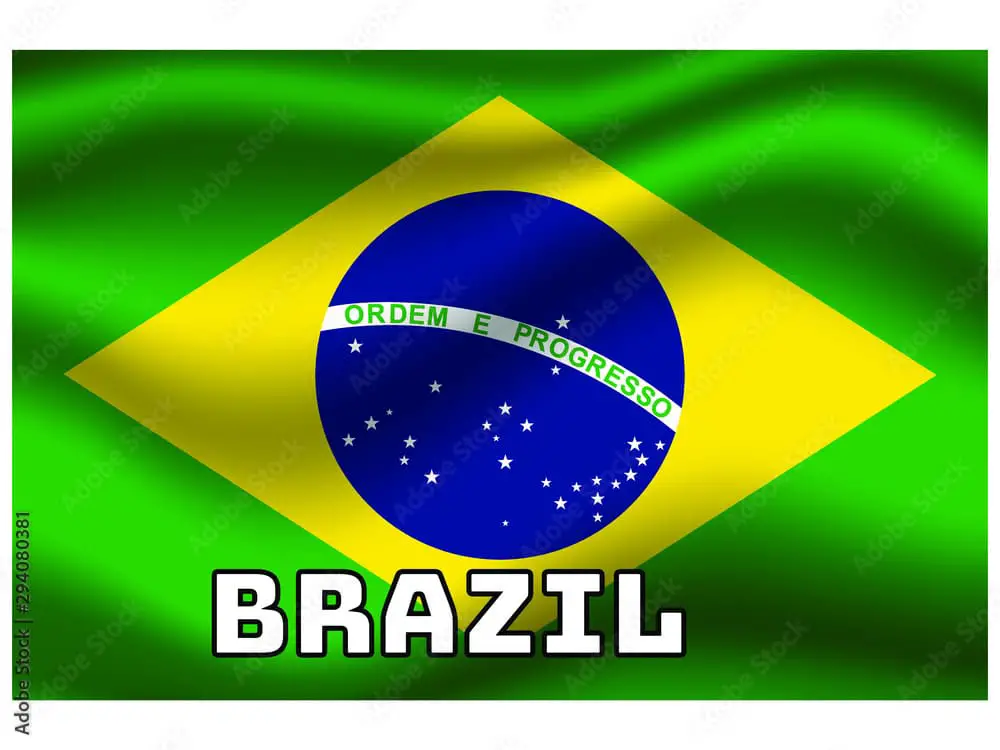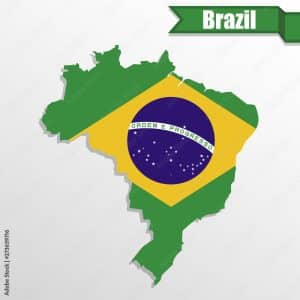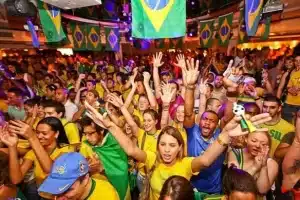Headlines
Brazil Population, Official Language And More.

Democratization and economic development
Democratization in Brazil was a process of political liberalization and social inclusion that took place from 1974 to 1988. It was initiated by the military regime itself, under pressure from domestic and international actors, who demanded more civil rights and political participation. It involved the restoration of direct elections, the legalization of political parties, the amnesty of political prisoners and exiles, the creation of a constituent assembly, and the drafting of a new constitution. It also involved the empowerment of local governments and communities, the expansion of social policies and programs, and the recognition of minority rights. It resulted in the consolidation of democracy and the emergence of new actors and movements in Brazil.

Brazil

Brazil-People
THE POPULATION
Brazil has an estimated population of 216.4 million people as of 2023, making it the seventh most populous country in the world and the second most populous in the Americas1. The population is mainly concentrated in the eastern part of the country, especially in the Southeast, South and Northeast regions. The largest city is São Paulo, with about 12.3 million inhabitants, followed by Rio de Janeiro, with 6.7 million.
THE LANDMARKS
Brazil has many natural and cultural landmarks that attract millions of visitors every year. Some of the most famous ones are:
Christ the Redeemer: A colossal statue of Jesus Christ that stands on top of Corcovado mountain in Rio de Janeiro. It is one of the New Seven Wonders of the World and a symbol of Brazilian Christianity.
Iguazu Falls: A spectacular series of 272 waterfalls that span the border between Brazil and Argentina. They are one of the largest and most impressive waterfalls in the world, and a UNESCO World Heritage Site.
Amazon Rainforest: The largest and most biodiverse tropical rainforest in the world, covering about 40% of Brazil’s territory. It is home to millions of plant and animal species, many of them endemic and endangered.
Forte do Presépio: A historical fort that was built by the Portuguese in 1616 to defend the city of Belém from invaders. It is now a museum that showcases the colonial history and culture of Brazil.
Santuario Dom Bosco: A modern church that was designed by architect Carlos Alberto Naves in Brasília, the capital of Brazil. It is famous for its stained-glass windows that create a colorful and mystical atmosphere inside.
THE OFFICIAL LANGUAGE
The official and national language of Brazil is Portuguese, which is spoken by 98% of the population. It is a Romance language that originated in Portugal but has evolved differently in Brazil due to influences from other languages, such as indigenous, African and European ones. Brazilian Portuguese has many regional variations and accents, but it is mutually intelligible with European Portuguese.
THE CULTURE
Brazil has a rich and diverse culture that reflects its history of colonization, immigration and miscegenation. It is influenced by various ethnic groups, such as indigenous, African, European, Asian and Arab ones. Some of the main aspects of Brazilian culture are:
Music: Brazil has a variety of musical genres that express its creativity and identity, such as samba, bossa nova, MPB, forró, axé, funk, rock, rap and more. Some of the most famous Brazilian musicians are Tom Jobim, Caetano Veloso, Gilberto Gil, Elis Regina, Chico Buarque, Roberto Carlos, Ivete Sangalo and Anitta.
Carnival: A festive celebration that takes place every year before Lent. It involves parades, costumes, dances, music and parties all over the country. The most famous carnival is in Rio de Janeiro, where samba schools compete for the best performance in the Sambadrome.
Football: The most popular sport in Brazil and a source of national pride. Brazil has won five FIFA World Cups, more than any other country. Some of the greatest football players in history are from Brazil, such as Pelé, Garrincha, Zico, Romário, Ronaldo, Ronaldinho and Neymar.
Religion: Brazil is a secular state that guarantees freedom of religion to its citizens. The majority of Brazilians are Christians (87%), mostly Roman Catholics (65%) or Protestants (22%). There are also followers of other religions, such as Spiritism (4%), Afro-Brazilian religions (3%), Judaism (0.1%) and Islam (0.1%).
THE ECONOMIC STABILITY
Brazil has a mixed economy that combines market capitalism with social welfare policies. It is the ninth largest economy in the world by nominal GDP ($1.4 trillion) and the seventh largest by purchasing power parity ($3.2 trillion) as of 2020. It is also one of the BRICS countries (along with Russia, India, China and South Africa), which are emerging economies with high growth potential.
However, Brazil also faces many economic challenges, such as high inequality, poverty, unemployment, inflation, corruption and debt. It has suffered from several economic crises in its history, such as the hyperinflation in the 1980s and 1990s, the global financial crisis in 2008, and the recession in 2015-2016. The COVID-19 pandemic also had a negative impact on the economy, causing a contraction of 4.1% in 2020. The current government, led by President Jair Bolsonaro, has implemented some reforms and measures to stimulate the economy, such as privatizations, tax cuts, fiscal austerity and trade liberalization. However, these policies have also been criticized for their social and environmental cosst.
THE GDP: GDP stands for gross domestic product, which is the total value of goods and services produced in a country in a year. Brazil’s GDP was $1.87 trillion in 2022, making it the ninth-largest economy in the world and the largest in Latin America. However, Brazil’s economic growth has been slow and uneven in recent years due to various challenges such as political instability, corruption, social inequality and environmental degradation.
THE CURRENCY: The currency of Brazil is the Brazilian real (plural reais), with the symbol R$ and the code BRL. It is subdivided into 100 centavos. The real replaced the cruzeiro real in 1994 as part of a plan to stabilize the economy and control inflation. As of today, one US dollar is worth about 4.97 reais.
THE FOOD: Brazil has a rich and diverse cuisine that reflects its multicultural heritage and vast territory. Some of the most famous dishes include:
Feijoada: A hearty stew of black beans, pork and beef, served with rice, kale, orange slices and farofa (toasted cassava flour).
Pão de queijo: Cheesy bread balls made from tapioca flour and cheese, usually eaten for breakfast or as a snack.
Brigadeiro: A sweet treat made from condensed milk, cocoa powder and butter, rolled into balls and coated with chocolate sprinkles.
Moqueca: A fish or seafood stew cooked in coconut milk, palm oil, tomatoes, onions and spices, served with rice or farofa.
Coxinha: A fried snack shaped like a chicken drumstick, filled with shredded chicken and cheese or catupiry (a creamy cheese spread).
Churrasco: Grilled meat (usually beef, pork or chicken) seasoned with salt and garlic, served with rice, beans, salad and farofa.
Acarajé: A deep-fried ball of mashed black-eyed peas, stuffed with shrimp, vatapá (a paste of bread, coconut milk, peanuts and palm oil) and caruru (a sauce of okra, onion, shrimp and palm oil).
Açaí: A purple fruit from the Amazon rainforest, blended with ice and sugar or honey, topped with granola, banana and other fruits.
You can find some of these dishes in restaurants near you or try making them at home with these recipes.
MAJOR CITIES: Brazil has many large and diverse cities, each with its own culture, history and attractions. Some of the most populous and well-known cities are:
São Paulo: The largest city in Brazil and South America, with about 11.45 million inhabitants. It is a global financial, cultural and gastronomic center, with a vibrant nightlife, museums, parks and skyscrapers.
Rio de Janeiro: The second-largest city in Brazil and the former capital, with about 6.21 million inhabitants. It is famous for its natural beauty, beaches, carnival, samba and landmarks such as the Christ the Redeemer statue and the Sugarloaf Mountain.
Brasília: The capital of Brazil since 1960, with about 2.98 million inhabitants. It is a planned city designed by architect Oscar Niemeyer, with a unique layout and modernist buildings. It is also a UNESCO World Heritage Site.
Salvador: The fourth-largest city in Brazil and the capital of Bahia state, with about 2.88 million inhabitants. It is the oldest city in Brazil and a center of Afro-Brazilian culture, music and cuisine. It has a historic center with colonial architecture, churches and museums.
Belo Horizonte: The sixth-largest city in Brazil and the capital of Minas Gerais state, with about 2.51 million inhabitants. It is known for its cultural scene, nightlife, gastronomy and art. It is also close to historical towns such as Ouro Preto and Mariana.
MAJOR AIRPORTS: Brazil has many airports that connect the country domestically and internationally. Some of the busiest and most important airports are:
São Paulo/Guarulhos International Airport (GRU): The largest airport in Brazil and South America, located in Guarulhos, about 25 km from São Paulo. It handles about 36 million passengers per year and serves as a hub for LATAM Airlines Brasil, Gol Transportes Aéreos and Azul Brazilian Airlines.
Rio de Janeiro/Galeão International Airport (GIG): The second-largest airport in Brazil and the main airport serving Rio de Janeiro. It handles about 17 million passengers per year and serves as a hub for Gol Transportes Aéreos.
Brasília International Airport (BSB): The third-largest airport in Brazil and the main airport serving Brasília. It handles about 16 million passengers per year and serves as a hub for LATAM Airlines Brasil.
Congonhas Airport (CGH): The fourth-largest airport in Brazil and the second airport serving São Paulo. It handles about 15 million passengers per year and mainly operates domestic flights.
Campinas/Viracopos International Airport (VCP): The fifth-largest airport in Brazil and the main airport serving Campinas, about 100 km from São Paulo. It handles about 10 million passengers per year and serves as a hub for Azul Brazilian Airlines.
MAJOR SEA PORTS: Brazil has many sea ports that handle the country’s trade and commerce with other nations. Some of the busiest and most important sea ports are:
Santos Port: The largest and key public port in Brazil, located in Santos, São Paulo state. It handles about 130 million tons of cargo per year and accounts for about 28% of the country’s trade balance. It mainly exports commodities such as soybeans, sugar, coffee, orange juice and ethanol.
Paranaguá Port: The second-largest public port in Brazil, located in Paranaguá, Paraná state. It handles about 53 million tons of cargo per year and accounts for about 14% of the country’s trade balance. It mainly exports grains such as soybeans, corn and wheat, as well as vehicles, wood and paper.
Itajaí Port: The third-largest public port in Brazil, located in Itajaí, Santa Catarina state. It handles about 21 million tons of cargo per year and accounts for about 5% of the country’s trade balance. It mainly exports frozen meat, poultry, fruits and vegetables, as well as imports machinery, electronics and chemicals.
Rio Grande Port: The fourth-largest public port in Brazil, located in Rio Grande, Rio Grande do Sul state. It handles about 19 million tons of cargo per year and accounts for about 4% of the country’s trade balance. It mainly exports soybeans, rice, wheat and wood pulp, as well as imports fertilizers, coal and petroleum products.
Salvador Port: The fifth-largest public port in Brazil, located in Salvador, Bahia state. It handles about 11 million tons of cargo per year and accounts for about 3% of the country’s trade balance. It mainly exports petrochemicals, minerals, fruits and cocoa, as well as imports wheat, fertilizers and machinery.
EDUCATION SYSTEM: Brazil has a public and private education system that covers the following levels or stages:
Early childhood education: This is the first stage of basic education, for children from 0 to 5 years old. It is not compulsory, but it is free and offered by public and private institutions. It includes daycare centers (for children up to 3 years old) and preschools (for children from 4 to 5 years old). It aims to promote the physical, emotional, social and cognitive development of children.
Primary education: This is the second stage of basic education, for students from 6 to 14 years old. It is compulsory and free in public schools. It lasts for 9 years and is divided into two cycles: the initial cycle (from 1st to 5th grade) and the final cycle (from 6th to 9th grade). It aims to provide students with the basic skills of reading, writing, math, science, history, geography and arts.
Lower secondary education: This is the third stage of basic education, for students from 15 to 17 years old. It is also compulsory and free in public schools. It lasts for 3 years and is equivalent to high school in some countries. It aims to prepare students for higher education or the labor market, by offering a common core curriculum and optional subjects according to their interests and abilities.
Upper secondary education: This is the fourth stage of basic education, for students who have completed lower secondary education. It is not compulsory, but it is free in public schools. It lasts for 3 years and is equivalent to college preparatory courses in some countries. It aims to deepen the knowledge and skills acquired in lower secondary education, by offering a common core curriculum and optional subjects according to their chosen field of study.
Tertiary or higher education: This is the highest level of education in Brazil, for students who have completed upper secondary education. It is not compulsory, but it is partially subsidized by the government in public universities. It can last from 2 to 6 years, depending on the type and level of degree. It includes undergraduate degrees (bachelor’s, licentiate’s or technological), graduate degrees (master’s or doctoral) and professional degrees (specialization or extension). It aims to provide students with advanced knowledge and skills in their chosen field of study, as well as research and innovation opportunities.





